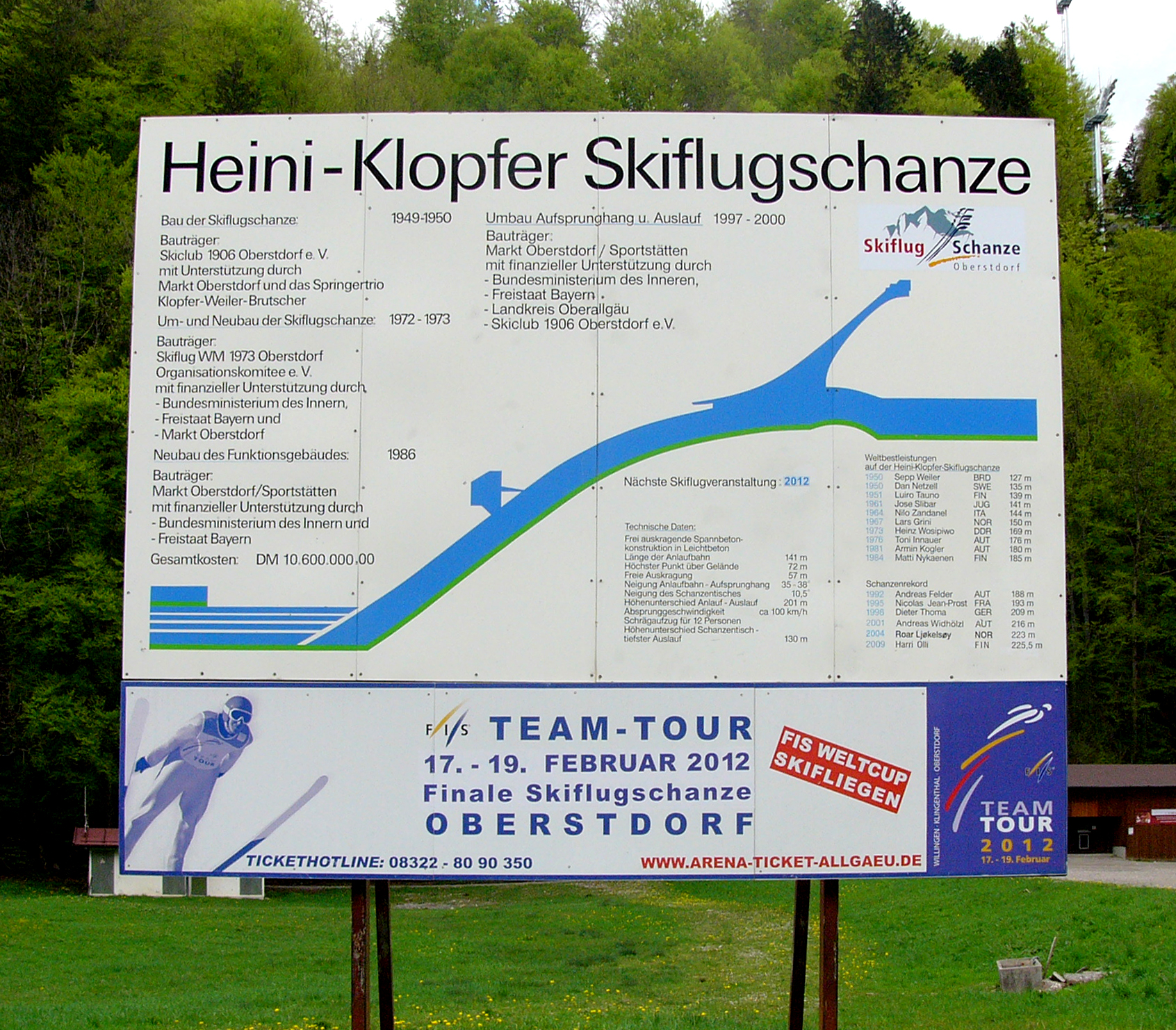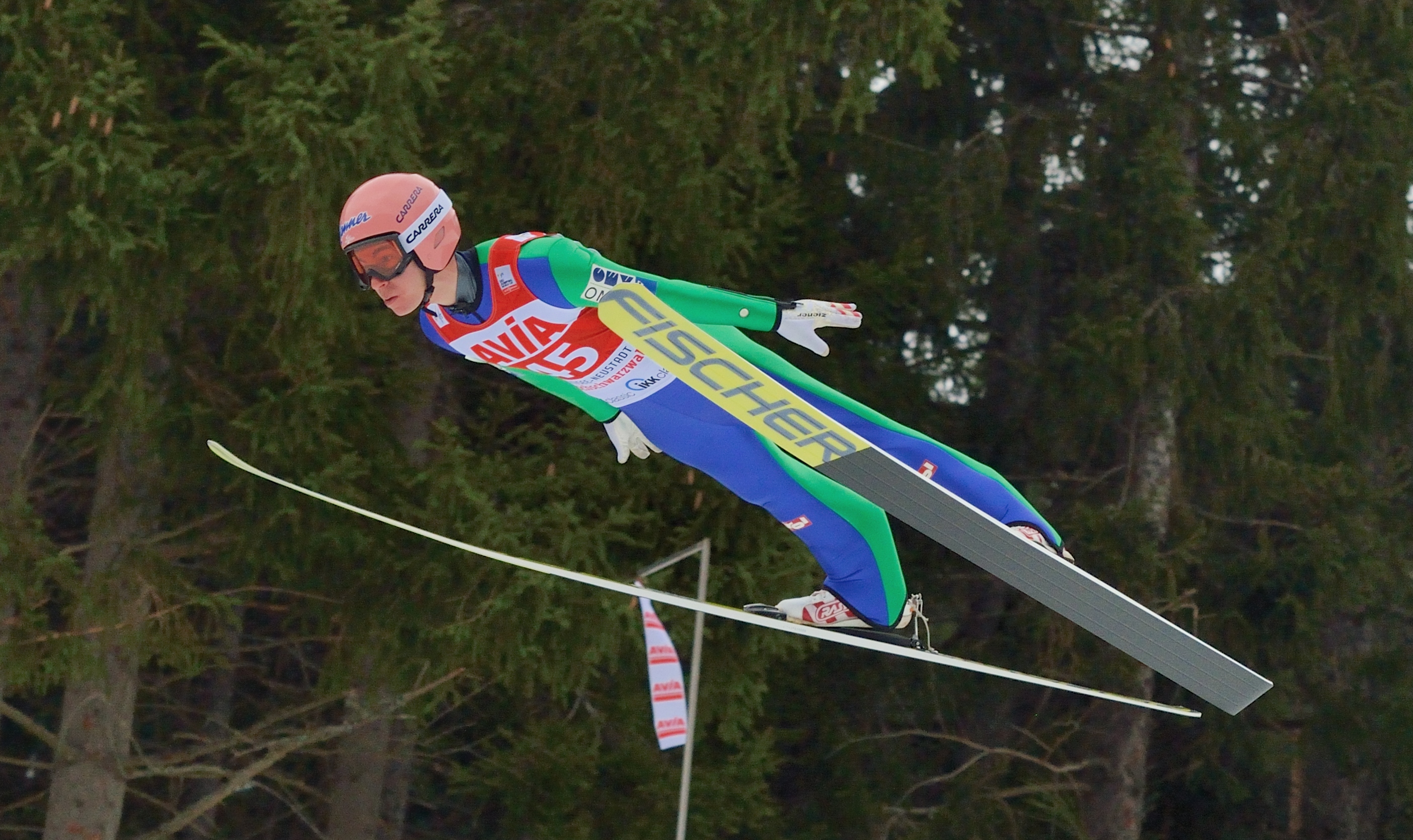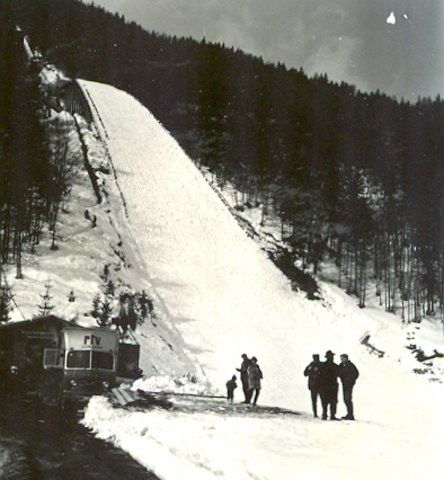|
Heini Klopfer Ski Jump
Heini-Klopfer-Skiflugschanze (''Heini Klopfer Ski Flying Hill'') is a ski flying hill in Oberstdorf, Germany. It was opened in 1950, and was later renamed after its architect, Heini Klopfer. A total of 21 world records have been set on the hill. The venue should not be confused with the Schattenberg ski jumping hill, also in Oberstdorf, about to the north. History 1949: Plans and realisation In 1949, they were originally discussing about whether they should just rather enlarge the existing Schattenbergschanze or build a complete new hill with calculation point at K120. Three ski jumpers Heini Klopfer, Sepp Weiler and Toni Brutscher together made a final decision to build a complete new hill and they found the perfect location. Inspired by Planica, the wanted to beat legendary Bloudkova velikanka in Slovenia, as the long time world record breaking and leading hill. Starting in July, hill construction was completed as planned in only five months, finished on 10 December. ... [...More Info...] [...Related Items...] OR: [Wikipedia] [Google] [Baidu] |
Heini Klopfer
Heinrich "Heini" Klopfer (3 April 1918 in Oberstdorf – 18 November 1968) was a German ski jumping, ski jumper and architect. At age 17, Klopfer was selected for trials for the 1936 Winter Olympics, but failed to qualify. After World War II Klopfer, Sepp Weiler and Toni Brutscher became known as the Oberstdorf Jumping Trio. He started working with construction of ski jumping hill. Kopfler has designed or been adviser for more than 250 hills. Main designs included all Olympic jumps used between 1960 and 1976, and he even designed one of the reconstructions of Holmenkollbakken in Oslo. He also was the ski jumping technical commissioner for the International Ski Federation. He died of a heart attack at the age of 50. In 1970, Heini-Klopfer-Skiflugschanze in Oberstdorf, one of the world's five ski flying hills, was named for him. References German male ski jumpers People from Oberstdorf Sportspeople from Swabia (Bavaria) 1918 births 1968 deaths 20th-century German architects ... [...More Info...] [...Related Items...] OR: [Wikipedia] [Google] [Baidu] |
2009–10 FIS Ski Flying World Cup
The 2009/10 FIS Ski Flying World Cup was the 13th official World Cup season in ski flying awarded with small crystal globe as the subdiscipline of FIS Ski Jumping World Cup. Calendar Men Team Standings Ski Flying Nations Cup unofficial References {{DEFAULTSORT:2009-10 Fis Ski Flying World Cup World cup FIS Ski Flying World Cup ... [...More Info...] [...Related Items...] OR: [Wikipedia] [Google] [Baidu] |
Bloudkova Velikanka
Bloudkova velikanka ("Bloudek Giant"), also Bloudek-Rožmanova velikanka, is a large ski jumping hill in Planica, Slovenia, originally opened in 1934. In 2001 the hill collapsed and was completely rebuilt in 2012. A new normal hill (HS102) was also built next to Bloudkova velikanka in 2012, replacing the old K90 hill. A total of ten world records were set at the venue in the 1930s and 1940s. The hill was originally constructed by Ivan Rožman, and was named after Stanko Bloudek. It was later renamed to Bloudek-Rožmanova velikanka in honour of Rožman. A year after opening, Bloudek became the main constructor, improving the hill until his death. In 1936, Josef Bradl became the first man in history to jump over . The axis and the name of the hill are protected as a technical monument by the Slovenian Institute for Cultural Heritage, and cannot be changed due to the historical significance. History Ski jumping in Planica began to develop when the village of Rateče received rail ... [...More Info...] [...Related Items...] OR: [Wikipedia] [Google] [Baidu] |
Planica
Planica () is an Alpine valley in northwestern Slovenia, extending south from the border village of Rateče, not far from another well-known ski resort, Kranjska Gora. Further south, the valley extends into the Tamar Valley, a popular hiking destination in Triglav National Park. Planica is famous for ski jumping. The first ski jumping hill was constructed before 1930 at the slope of Mount Ponca. In 1933, Ivan Rožman constructed a larger hill, known as the Bloudek Giant (''Bloudkova velikanka'') after Stanko Bloudek, which later gave rise to ski flying. The venue was completed in 1934. The first ski jump over in history was achieved at the hill in 1936 by Sepp Bradl. At the time, it was the biggest jumping hill in the world. In 1969, a new K185 hill, the Gorišek Brothers Flying Hill (''Letalnica bratov Gorišek'') was built by Vlado and Janez Gorišek Janez Gorišek (born September 13, 1933) is a Slovenian civil engineer, constructor, and architect, who holds a degree f ... [...More Info...] [...Related Items...] OR: [Wikipedia] [Google] [Baidu] |
Toni Brutscher
Toni Brutscher (born 15 November 1925 in Oberstdorf – 16 November 1983) was a West German ski jumper who competed during the 1950s. He finished fourth in the individual large hill event at the 1952 Winter Olympics in Oslo Oslo ( , , or ; sma, Oslove) is the capital and most populous city of Norway. It constitutes both a county and a municipality. The municipality of Oslo had a population of in 2022, while the city's greater urban area had a population of .... Brutscher's best individual career finish was third twice in the individual normal hill event (1953, 1956). Toni Brutscher died of cancer in 1983 at the age of 58. External links * Ski jumpers at the 1952 Winter Olympics German male ski jumpers 1925 births 1983 deaths People from Oberstdorf Sportspeople from Swabia (Bavaria) Olympic ski jumpers of Germany Deaths from cancer in Germany {{Germany-skijumping-bio-stub ... [...More Info...] [...Related Items...] OR: [Wikipedia] [Google] [Baidu] |
Sepp Weiler
Sepp Weiler (22 January 1921, Oberstdorf, Bavaria – 24 May 1997) was a West German ski jumper who competed from 1952 to 1956. Career He finished tied for eighth in the individual large hill event at the 1952 Winter Olympics in Oslo. Weiler's best career finish was fifth in an individual normal hill event in Austria in 1953. On 2-3 March 1950 he set two world records at 127 metres (417 ft) on Heini-Klopfer-Skiflugschanze ski flying hill in Oberstdorf, West Germany West Germany is the colloquial term used to indicate the Federal Republic of Germany (FRG; german: Bundesrepublik Deutschland , BRD) between its formation on 23 May 1949 and the German reunification through the accession of East Germany on 3 O .... Ski jumping world records *Weiler jumped 133 metres after Dan Netzell set world record (Ljudska pravica; 4/3/1950). Notes References External links * {{DEFAULTSORT:Weiler, Sepp 1921 births 1997 deaths People from Oberstdorf Sportspeople from Swabia ... [...More Info...] [...Related Items...] OR: [Wikipedia] [Google] [Baidu] |
Schattenberg Ski Jump
Audi Arena Oberstdorf (from 2004 to 2017 Erdinger Arena, until 2004 Skisprungstadion am Schattenberg) is a complex of five ski jumping hills, located in the German town of Oberstdorf, Bavaria, on the northwestern slope of the Schattenberg mountain (1845 m). On the largest hill of the complex, the Schattenbergschanze (meaning "Hill on Shadow Mountain"), with its K-120 and HS137, the first competition of the 4-Hills-Tournament takes place every year since 1952. The hill has held three FIS Nordic World Ski Championships – in 1987, 2005 and 2021. It is equipped with artificial lighting and stands for 27,005 seats. There is also one normal hill K-95 (HS106), one middle hill K-56 (HS60) and two small hills K-30 (HS30) and K-19 (HS20). The venue should not be confused with another one in Oberstdorf, the Heini Klopfer ski flying hill, about 7 kilometres to the south. History The construction of the ski jump according to a project of Hans Schwendiger started in 1925 and was finis ... [...More Info...] [...Related Items...] OR: [Wikipedia] [Google] [Baidu] |
List Of Longest Ski Jumps
Ski jumping is a winter sport in which athletes compete on distance and style in a jump from a ski jumping hill. The sport has traditionally focused on a combination of style and distance, and it was therefore early seen as unimportant in many milieus to have the longest jump. The International Ski Federation (Fédération Internationale de Ski; FIS) has largely been opposed to the inflation in hill sizes and setting of distance records, and no world records have been set at ski jumping at the Winter Olympics, Olympic, FIS Nordic World Ski Championships, World Championship, Holmenkollen Ski Festival or Four Hills Tournament events, as these have never been among the largest hills in the world. Since 1936, when the first jump beyond was made, all world records in the sport have been made in the discipline of ski flying, an offshoot of ski jumping using larger hills where distance is explicitly emphasised. As of March 2017, the official world record for the longest ski jump is , se ... [...More Info...] [...Related Items...] OR: [Wikipedia] [Google] [Baidu] |
Ski Jumping Hill
A ski jumping hill is a sports venue used for ski jumping. They vary in size from temporary handmade snow structures to permanent competition venues. At the top is an in-run where the jumper runs down to generate sufficient speed, before reaching the jump. The skier is then airborne until landing on the landing slope. The last part of the hill is the out-run, which may be either flat or even uphill, allowing the jumper to stop. The steepest point of the hill is the construction point, which is used to determine the score of a particular length. The size of a hill is measured in the hill size. Hills with a hill size exceeding HS185 are designated ski flying hills; there are five such hills in the world. Structure The top of the hill is the start. This allows the jury to regulate the speed of the jumpers in varying wind conditions, by shortening or lengthening the distance along the in-run. The platform has a bar across it, which the jumper sits on. By leaning forward, the jumper ... [...More Info...] [...Related Items...] OR: [Wikipedia] [Google] [Baidu] |
Ski Flying
Ski flying is a winter sport discipline derived from ski jumping, in which much greater distances can be achieved. It is a form of competitive individual Nordic skiing where athletes descend at high speed along a specially designed takeoff ramp using skis only; jump from the end of it with as much power as they can generate; then glide – or 'fly' – as far as possible down a steeply sloped hill; and ultimately land within a target zone in a stable manner. Points are awarded for distance and stylistic merit by five judges. Events are governed by the International Ski Federation (''Fédération Internationale de Ski''; FIS). The rules and scoring in ski flying are mostly the same as they are in ski jumping, and events under the discipline are usually contested as part of the FIS Ski Jumping World Cup season, but the hills (of which there are only five remaining, all in Europe) are constructed to different specifications in order to enable jumps of up to 66% longer in distan ... [...More Info...] [...Related Items...] OR: [Wikipedia] [Google] [Baidu] |
2018–19 FIS Ski Flying World Cup
The 2018–19 FIS Ski Flying World Cup was the 22nd official World Cup season in ski flying. The winner was be awarded with small crystal globe as the subdiscipline of FIS Ski Jumping World Cup. Calendar Map of World Cup hosts Men Team Standings Ski Flying References {{DEFAULTSORT:2018-19 Fis Ski Flying World Cup World cup A world cup is a global sporting competition in which the participant entities – usually international teams or individuals representing their countries – compete for the title of world champion. The event most associated with the concept i ... FIS Ski Flying World Cup ... [...More Info...] [...Related Items...] OR: [Wikipedia] [Google] [Baidu] |
2016–17 FIS Ski Flying World Cup
The 2016–17 FIS Ski Flying World Cup was the 20th official World Cup season in ski flying. The winner was awarded with small crystal globe as the subdiscipline of FIS Ski Jumping World Cup. Calendar Map of World Cup hosts Men Team Standings Ski Flying References {{DEFAULTSORT:2016-17 Fis Ski Flying World Cup World cup A world cup is a global sporting competition in which the participant entities – usually international teams or individuals representing their countries – compete for the title of world champion. The event most associated with the concept i ... FIS Ski Flying World Cup ... [...More Info...] [...Related Items...] OR: [Wikipedia] [Google] [Baidu] |




